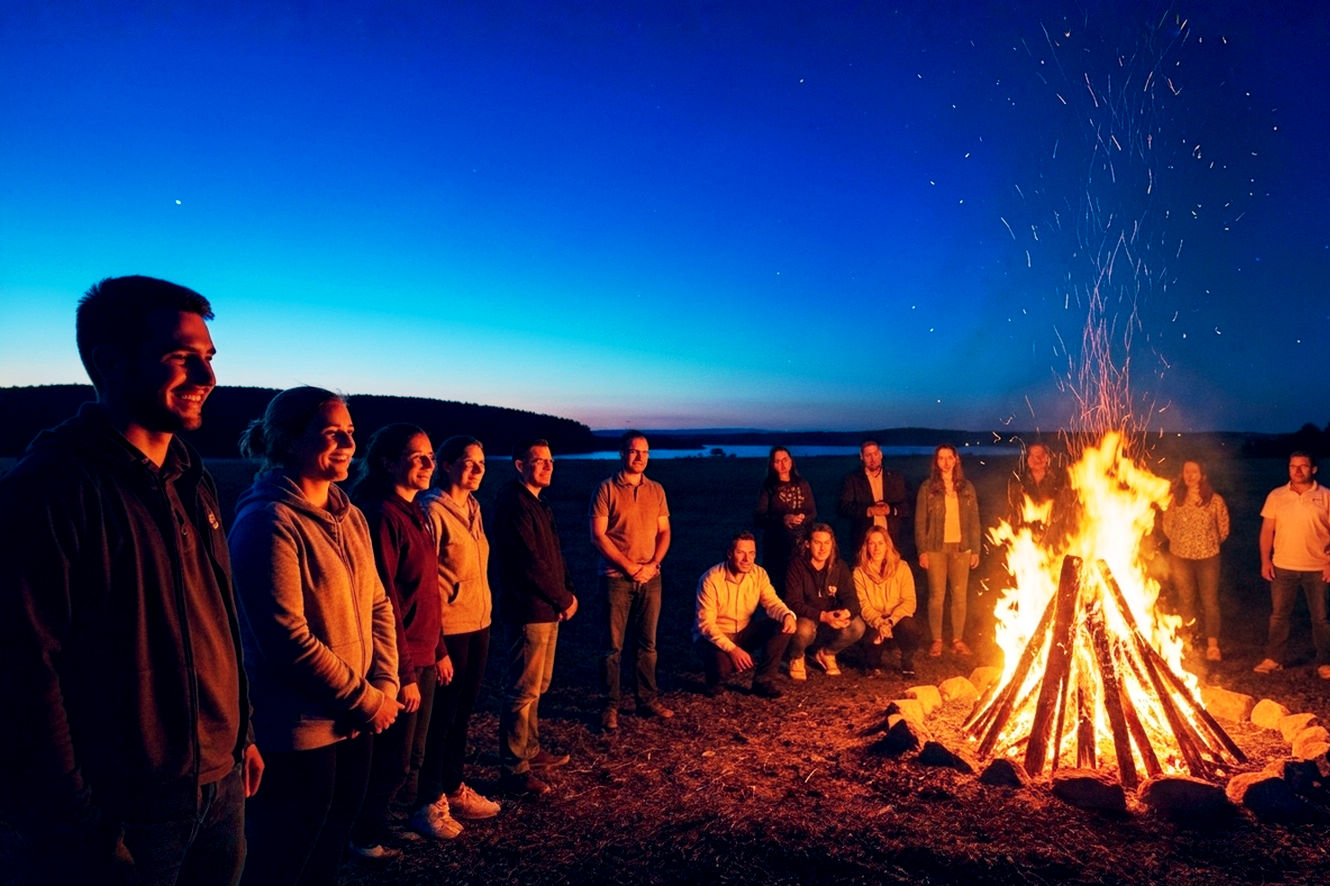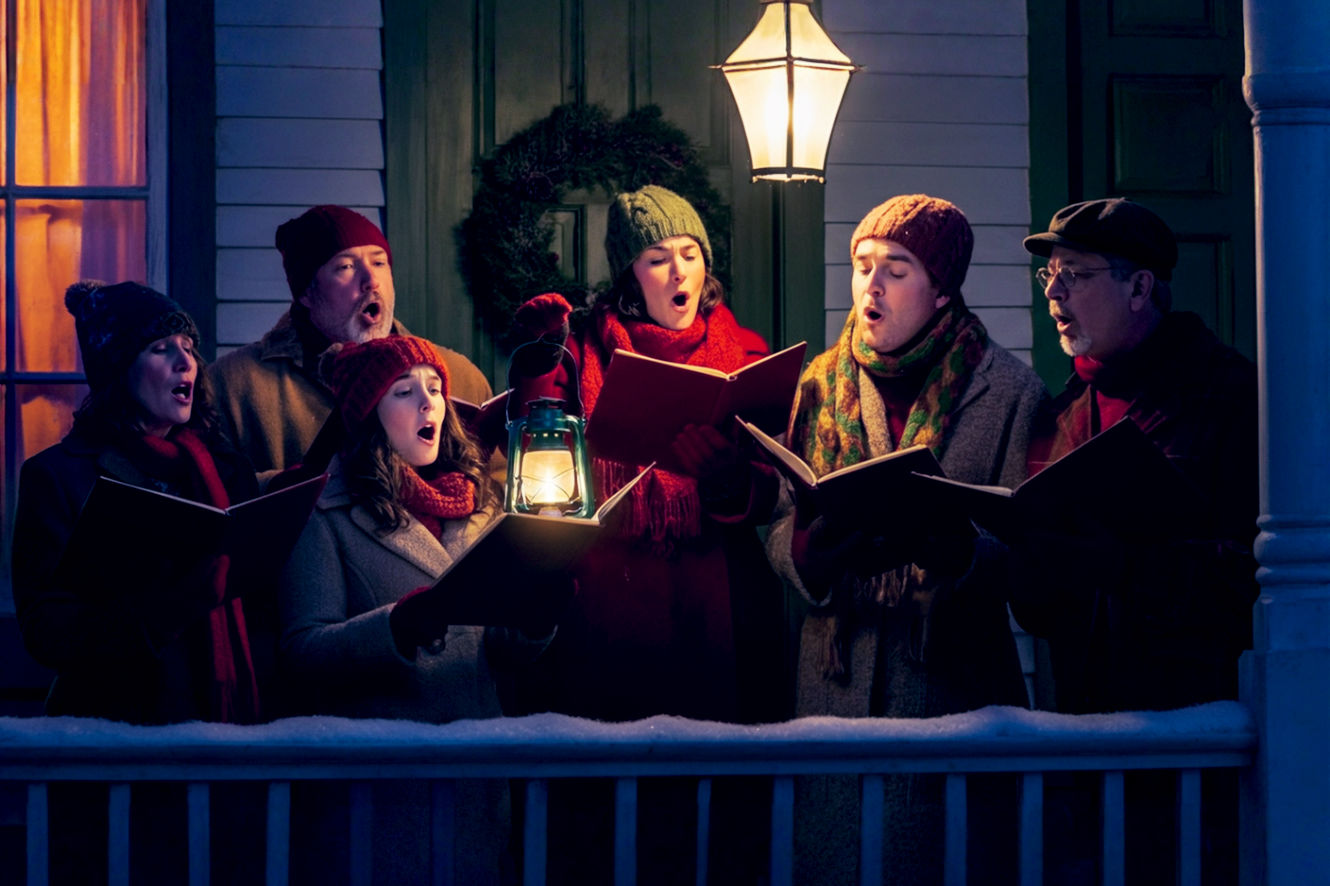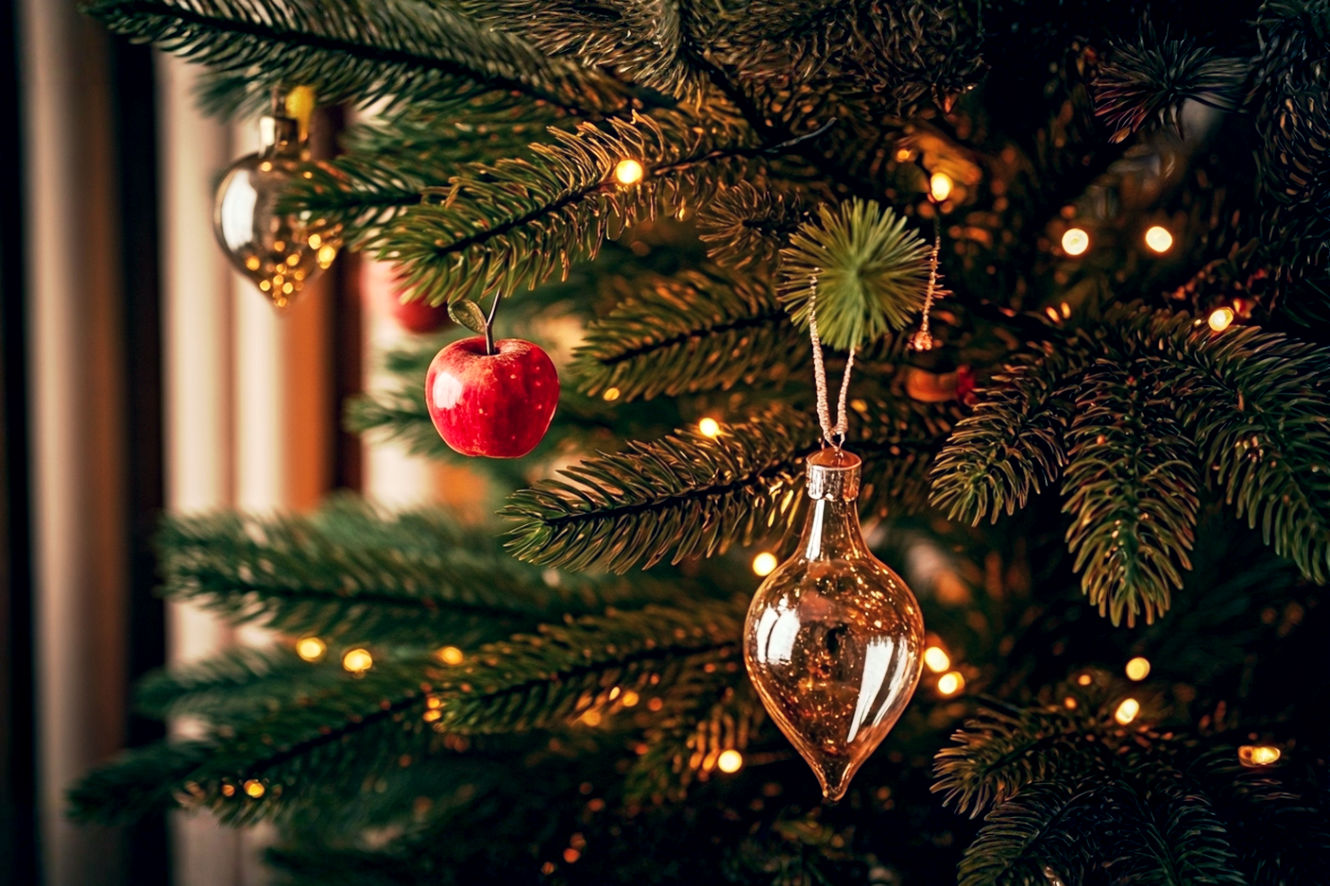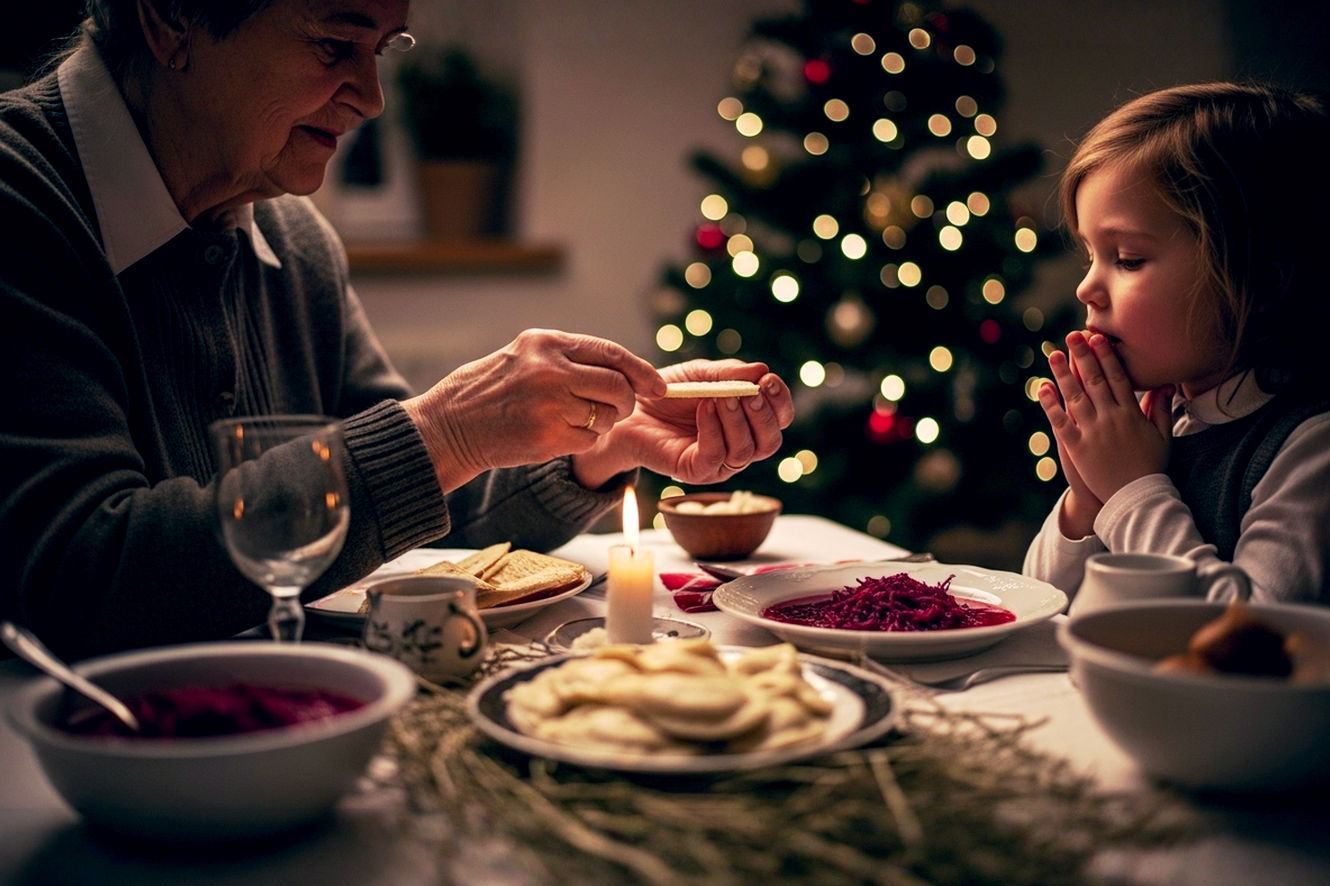This post may contain affiliate links. If you make a purchase through these links, we may earn a commission at no additional cost to you.
There’s a certain magic that settles over France as the year draws to a close. It’s a quiet, enchanting transformation. The crisp winter air begins to carry the scent of roasting chestnuts and spiced mulled wine, or vin chaud. Cobblestone streets, once bustling with the energy of autumn, are now bathed in the warm, golden glow of fairy lights. This isn’t just a holiday; it’s a season, a feeling, a deeply ingrained part of the nation’s soul. Welcome to Christmas in France, a celebration that masterfully blends ancient tradition with a distinctly modern sense of joie de vivre.
For many, a French Christmas conjures images of the dazzling lights of Paris or the storybook charm of Alsatian villages. While these are certainly iconic, the reality is a rich and diverse tapestry of customs that vary dramatically from one region to the next. It’s a time when the country’s famous appreciation for gastronomy, family, and heritage comes into sharp focus.
From the solemn beauty of midnight mass in a centuries-old cathedral to the boisterous, food-filled family gathering that stretches into the early hours of Christmas morning, the French approach the holiday with a unique blend of reverence and revelry.
This guide is your passport to understanding it all. We’ll journey through the Advent season, explore the legendary Christmas markets, and pull up a chair at the grandest feast of the year, Le Réveillon. We’ll uncover the unique traditions that make a Christmas in Provence feel worlds away from one in Normandy and trace the evolution of Père Noël, France’s very own Father Christmas.
Whether you’re planning a trip or simply want to infuse your own holiday with a touch of French elegance, you’ll find everything you need to know right here. Forget the fleeting clichés; we’re diving deep into the heart of what makes a French Christmas an unforgettable experience of warmth, wonder, and exceptional food.
The Countdown Begins: Advent and the Buildup to Noël
In France, the magic of Christmas doesn’t just appear overnight on December 24th. It’s a gradual crescendo that builds throughout the month, a period known as l’Avent. This is a time of anticipation and preparation, where traditions, both big and small, set the stage for the main event.
The Advent Wreath and Calendar: Marking the Days
Like in many other European countries, the Advent wreath, or Couronne de l’Avent, is a common sight in French homes, particularly in the east of France. Traditionally woven from fir and pine branches, it holds four candles. Each Sunday of Advent, a new candle is lit, symbolizing the approaching light of Christmas. It’s a simple, beautiful ritual that brings families together and marks the slow, steady march toward the holiday.
For children, the excitement is channeled through the Advent calendar, or calendrier de l’Avent. While modern calendars filled with chocolates or small toys are now ubiquitous, the tradition has humbler origins. It began as a way for children to count down the days, with each of the 24 windows opening to reveal a festive image or a Bible verse. Today, you’ll find exquisitely designed calendars from Parisian chocolatiers and department stores, turning the daily countdown into a gourmet experience.
Saint Nicholas’ Day: The Other Gift-Giver
Long before Père Noël dominated the Christmas scene, another figure was the star of the show, especially in the northeastern regions of Alsace and Lorraine. On the morning of December 6th, children awake hoping for a visit from Saint Nicholas.
The legend tells of a benevolent bishop from the 4th century known for his generosity. In France, his story is often accompanied by a more menacing character: Père Fouettard, or “Father Whipper.” Dressed in black, with a scraggly beard and often carrying a whip or a bundle of sticks, his role is to deal with the naughty children. While Saint Nicholas leaves sweets, gingerbread, and clementines for the well-behaved, Père Fouettard is said to leave lumps of coal or even dole out spankings.
This tradition, with its roots in German and Dutch culture, remains a vibrant part of the holiday season in the east. Towns hold parades and festivals in honor of Saint Nicholas, keeping the ancient folklore alive for a new generation.
Writing to Père Noël: The World’s Most Famous Pen Pal
A beloved tradition for French children is writing a letter to Père Noël. This isn’t just a symbolic gesture; it’s a state-sanctioned affair. In 1962, a law was passed in France declaring that any letter addressed to Père Noël would receive a response. A special postal service was established in Libourne, a town near Bordeaux, with a team of “secretaries” tasked with replying to every single letter.
Children pour their hearts out in these notes, listing their desired gifts, promising to be good, and sometimes asking surprisingly profound questions. Each one receives a beautifully designed postcard in return, signed by Père Noël himself. This charming tradition not only fuels the magic but also serves as a child’s first formal lesson in correspondence, complete with addressing an envelope and sending it off.
A Feast for the Senses: The Legendary Marchés de Noël
Perhaps no single image is more synonymous with a French Christmas than the marché de Noël, or Christmas market. These open-air markets transform town squares into winter wonderlands, their wooden chalets brimming with handcrafted gifts, regional delicacies, and festive cheer. While the tradition originated in the Germanic regions of Europe, France has embraced it with unparalleled passion and style.
The Heart of the Tradition: Strasbourg and Alsace
If there is a capital of Christmas in France, it is undoubtedly Strasbourg. Its market, the Christkindelsmärik, dates back to 1570, making it one of the oldest and most famous in Europe. The city hosts not just one, but a series of markets spread across its historic center, each with its own theme. The air is thick with the aroma of cinnamon, gingerbread (pain d’épices), and roasting sausages. Towering over it all is the Great Christmas Tree in Place Kléber, a magnificent fir that becomes the city’s glittering centerpiece.
The entire Alsace region follows suit, with towns like Colmar and Mulhouse creating postcard-perfect scenes. Colmar, with its canals and half-timbered houses, feels like a fairy tale come to life. Its markets are intimate and enchanting, set against a backdrop of breathtaking medieval architecture.
What to See, Do, and Eat at a French Christmas Market
Navigating a marché de Noël is an experience for all five senses. Here’s what you can expect:
- The Food and Drink: This is often the main attraction. You absolutely must try the vin chaud, a hot mulled wine infused with spices like cinnamon, cloves, and star anise. For a non-alcoholic option, there’s often spiced apple juice (jus de pomme chaud). Food stalls serve up hearty, warming fare. Look for Alsatian specialties like flammekueche (a thin, crispy flatbread topped with cream, onions, and bacon), sausages, and dishes featuring melted cheese, like raclette or tartiflette. For your sweet tooth, you’ll find crêpes, waffles (gaufres), and a dizzying array of gingerbread.
- The Crafts and Gifts: The chalets are a treasure trove of unique, handcrafted goods. This is the perfect place to find traditional decorations, such as hand-blown glass ornaments (boules de Noël) from Meisenthal or intricate wooden toys. You’ll also find local artisanal products, from pottery and candles to scarves and soaps. It’s a far cry from mass-produced souvenirs; the emphasis is on quality and craftsmanship.
- The Atmosphere: Beyond the shopping and eating, it’s the atmosphere that makes these markets so special. The sound of carolers, the laughter of children on a vintage carousel, and the dazzling light displays all contribute to a feeling of collective joy and wonder. Many markets also feature an ice-skating rink, adding to the festive fun.
Beyond Alsace: Markets Across France
While Alsace may be the epicenter, fantastic Christmas markets can be found all over France.
- Paris: The capital boasts several markets, with the largest being La Magie de Noël (The Magic of Christmas) in the Tuileries Garden. It offers a more carnival-like atmosphere with a giant Ferris wheel and numerous attractions, alongside the traditional chalets.
- Lille: In the north, Lille’s market is known for its strong Flemish influence. The entire city is decked out in lights, and the market on Place Rihour is a cozy, festive hub.
- Provence: In the south, markets take on a different flavor. Alongside the usual festive fare, you’ll find Provençal specialties like santons (small, hand-painted nativity figurines), nougat, and candied fruits. The market in Aix-en-Provence is particularly famous.
- Reims: In the Champagne region, the market is set against the stunning backdrop of the Notre-Dame Cathedral. Naturally, champagne bars are a prominent feature, offering a touch of bubbly elegance to the festivities.
The Main Event: Le Réveillon de Noël
In many English-speaking countries, the main celebration happens on Christmas Day. In France, the climax of the holiday season is Christmas Eve. The evening is dedicated to a spectacular, multi-course feast known as Le Réveillon de Noël. The name comes from the verb réveiller, meaning “to wake up,” as the meal traditionally involved staying awake until midnight and beyond.
This is not just a meal; it’s a gastronomic marathon, a testament to the French love of food and family. Preparations can take days, and the table is set with the finest china and silverware. The meal itself can last for hours, often stretching from the early evening well into the early hours of Christmas morning.
A Tour of the Réveillon Menu: From Oysters to Bûche de Noël
The menu for Le Réveillon is all about luxury and indulgence. While it varies by region and family, it typically includes a series of decadent courses.
L’Apéritif
The evening begins with an apéritif, or pre-dinner drinks and snacks. This always starts with champagne. It’s practically a rule. Alongside the bubbly, you might find small, elegant bites like canapés, gougères (savory cheese puffs), or verrines (small, layered appetizers in a glass).
Les Entrées (The Starters)
This is where the opulence truly begins. Common starters include:
- Oysters (Huîtres): A massive platter of fresh oysters, served on ice with lemon wedges and a shallot vinaigrette (mignonette sauce), is a classic Réveillon centerpiece.
- Foie Gras: The controversial but deeply traditional delicacy of fattened duck or goose liver is a must-have. It’s typically served as a pâté on small pieces of toasted brioche or gingerbread, often accompanied by a fig jam or a sweet white wine like Sauternes.
- Smoked Salmon: Thinly sliced smoked salmon, served with blinis, crème fraîche, and lemon, is another popular and elegant choice.
- Coquilles Saint-Jacques: Scallops, often served seared with a butter sauce or baked in their shells, add another touch of seafood luxury.
Le Plat Principal (The Main Course)
After the rich starters, the main course is typically a grand roasted bird.
- Turkey with Chestnut Stuffing (Dinde aux Marrons): While turkey is an American import, it has become the quintessential Christmas main course in France. It’s roasted to perfection and served with a rich stuffing made from chestnuts, sausage meat, and herbs.
- Capon or Goose: For a more traditional or gourmet option, many families opt for a roasted capon (chapon) or goose (oie). These birds are prized for their tender, flavorful meat.
The main course is always served with an array of side dishes, such as roasted potatoes, green beans with bacon, and puréed winter vegetables.
Le Fromage (The Cheese Course)
No French feast would be complete without a cheese course. A platter (plateau de fromages) is presented after the main course, featuring a selection of cheeses representing different regions and milk types (cow, goat, sheep). It’s served with a fresh baguette and, of course, more red wine.
Le Dessert: The Bûche de Noël
The grand finale of the Réveillon is the iconic Bûche de Noël, or Yule Log. This is a sponge cake, typically rolled and filled with buttercream, then frosted to look like a log. The tradition harks back to the medieval custom of burning a large log on the hearth from Christmas Eve to New Year’s Day to bring good fortune.
While the classic version is chocolate and coffee, modern pâtissiers have transformed the Bûche de Noël into an art form. Each year, they unveil breathtaking new creations with exotic flavors like passion fruit, pistachio, or salted caramel, often decorated with intricate sugar work, meringue mushrooms, and edible holly.
The Thirteen Desserts of Provence
In the southern region of Provence, the dessert course is an even more elaborate affair. Here, tradition dictates that thirteen different desserts (les treize desserts) must be served. They represent Jesus and the twelve apostles at the Last Supper. The selection always includes:
- The Four “Beggars” (les quatre mendiants): These represent the four monastic orders and consist of four types of nuts and dried fruits: walnuts or hazelnuts (Augustinians), almonds (Carmelites), raisins (Dominicans), and dried figs (Franciscans).
- Nougat: Both white nougat (soft and chewy) and black nougat (hard and crunchy) are required.
- Pompe à l’huile: A sweet, olive oil-based bread flavored with orange blossom water. Tradition says a piece must be broken off by hand, not cut with a knife, to ensure good fortune for the coming year.
The remaining desserts can vary but often include fresh seasonal fruits (clementines, pears), candied fruits, and local specialties like Calissons d’Aix (a marzipan-like candy).
Traditions Across the Hexagon: Regional Christmas Customs
France is a country of proud and distinct regions, and this diversity is beautifully reflected in its Christmas traditions.
Alsace and Lorraine: A Germanic Heart
As we’ve seen, the traditions in these northeastern regions are heavily influenced by their Germanic neighbors. From Saint Nicholas and Père Fouettard to the primacy of the Christmas markets and the love of gingerbread, the holiday season here has a unique, fairy-tale character that sets it apart from the rest of France.
Provence: Santons and Light
In Provence, the nativity scene, or crèche, is the heart of the Christmas celebration. But these are no ordinary nativity scenes. They are populated with santons (literally “little saints”), small, hand-painted terracotta figurines.
The tradition began during the French Revolution when churches were closed and public nativity scenes were banned. To celebrate in secret, families began creating their own miniature scenes at home. The santon tradition blossomed, and today, it’s a celebrated art form.
What makes the Provençal crèche so special is that it extends far beyond the holy family. The entire village is represented. You’ll find figurines of the baker, the fisherman, the lavender-seller, the mayor—every key figure of Provençal life. It’s a beautiful depiction of the entire community coming together to welcome the birth of Jesus. Each year, families add new santons to their collection, and santon fairs are a major part of the local Christmas markets.
The Shoes by the Fireplace
While children in many countries hang stockings, the traditional French custom is to leave out shoes or slippers (souliers) by the fireplace. On Christmas morning, they hope to wake up and find them filled with small gifts, sweets, and fruits from Père Noël. This charming tradition is still practiced in many homes, often alongside the more modern custom of piling presents under the Christmas tree (sapin de Noël).
Midnight Mass and Church Services
For many French families, particularly those of the Catholic faith, Midnight Mass (Messe de Minuit) on Christmas Eve is an essential part of the celebration. Churches and cathedrals across the country, from the grand Notre-Dame in Paris to the smallest village parish, hold services. The ringing of church bells at midnight is a powerful and evocative sound that echoes through the quiet streets. Attending the service is often the final activity before heading home to either begin the Réveillon feast or to finally go to bed in anticipation of Christmas morning.
Père Noël and the French Art of Gift-Giving
The star of Christmas for French children is, without a doubt, Père Noël (Father Christmas). His image is similar to the American Santa Claus—a jolly, white-bearded man in a red suit. He travels on a sleigh pulled by reindeer and delivers gifts during the night between Christmas Eve and Christmas Day.
The name Père Noël first appeared in the mid-19th century, gradually supplanting other regional gift-bringers like Saint Nicholas or the Christkind (an angel-like figure who brought gifts in parts of eastern France).
Gift-giving in France is typically a family affair on Christmas morning. Children rush to the sapin de Noël to see what Père Noël has left for them. Adults also exchange gifts, though the focus is often less on quantity and more on thoughtful, well-chosen presents. A good book, a bottle of fine wine or cognac, a beautiful scarf, or a gourmet food basket are all common and appreciated gifts among adults. The emphasis is on quality, taste, and the pleasure of giving.
A Taste of French Christmas at Home
You don’t need to be in France to enjoy the elegance and warmth of a French Christmas. Here are a few ways to incorporate some of these timeless traditions into your own holiday celebration:
- Host Your Own Réveillon: You don’t have to make all ten courses, but you can adopt the spirit of the Réveillon. Start with champagne and a few elegant appetizers like smoked salmon blinis. For the main course, try roasting a chicken with a simple chestnut stuffing. And for dessert, you can buy or bake a Bûche de Noël. The key is to take your time, savor the food, and enjoy the company.
- Visit a Christmas Market: While you might not find one on the scale of Strasbourg, many cities around the world now host European-style Christmas markets. Seek one out and treat yourself to some mulled wine and roasted chestnuts.
- Start a Santon Collection: You can order authentic santons from workshops in Provence online. Start with the holy family and a few villagers, and add a new figure each year. It’s a beautiful tradition that can be passed down through generations.
- Embrace the Cheese Course: Elevate your holiday meal by adding a French-style cheese course. Select three to five different cheeses, arrange them on a wooden board, and serve them after the main course with a fresh baguette.
- Send a Letter to Père Noël: If you have children, writing a letter to Père Noël is a wonderful activity. You can even “reply” with a special postcard to keep the magic alive.
From the quiet anticipation of Advent to the boisterous joy of the Réveillon, a French Christmas is a celebration of all the things that matter most: family, heritage, and the simple pleasure of a shared meal. It’s a reminder that the most profound magic is often found in time-honored traditions, lovingly preserved and passed on with joy. Joyeux Noël!






